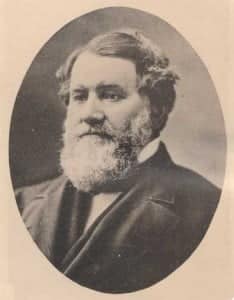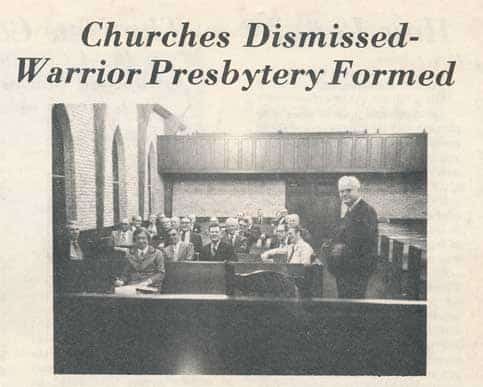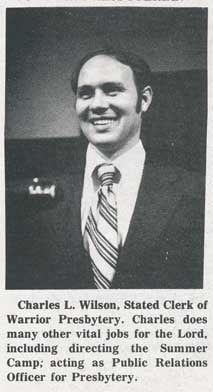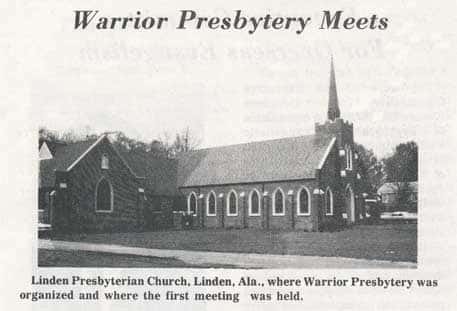From the church’s web site:
The First Presbyterian Church of Gulfport, Mississippi, was organized on Friday, February 17, 1899, following a petition to the New Orleans Presbytery from eight individuals: Dr. A. Murdock, Mrs. E.T. Platt, Mr. Kenneth McLeod, Mrs. Sarah McLeod, Mrs. T.S. Strange, Mrs. M. Hauser, Mr. W.J. Quarles, and Mrs. W.E. Quarles. The church actively met together under the leadership of the Rev. Dr. J.D. Mooney, who served as Stated Supply for just over 2 years, until November 1901. During the first few years of its existence, the church met in the public school building until that building burned down sometime in 1900 or 1901. Subsequently, the church met in various buildings around town–one of which was a two-story structure located on the west side of 28th Avenue.
From September 1902 until November 1904, the Rev. Dr. D.L. Temple served as Stated Supply. Shortly after arriving in Gulfport, Dr. Temple established a building program to begin construction of a new church facility, which was to be built on four lots located on the western side of 13th Street. These lots were conveyed to the church by Captain J.T. Jones in May 1901, for the grand sum of $1. The new facility, which cost a total of $1,500, was completed near the end of the year in 1903 anddedicated on January 30, 1904.
A year later, in February 1904, the church installed its first pastor, the Rev. Fred L. McFadden, who served until September 1907. The Rev. McFadden was only 31 years old when he became the church’s first pastor. He claimed he was descended from the Scottish minister and reformer Robert Bruce, who succeeded John Knox at St. Giles High Kirk in Edinburgh. No doubt it was partly because of this fact that McFadden was encouraged to go on and do further post-graduate study at the University of Edinburgh, which he did beginning in 1907.
On December 9, 1909, the Rev. Dr. Herbert A. Jones was installed as the church’s second pastor. Dr. Jones was born in Liverpool, England, but became a citizen of the U.S. when he was 23 years old. He served various churches in Tennessee, Texas, and Colorado before accepting the call to come to Mississippi. He rapidly became one of the most well known and beloved preachers in the state. Twice he had the privilege of preaching before the President of the United States (once before President James Garfield and once before President Woodrow Wilson). Dr. Jones served Gulfport until his death on January 12, 1915, and he was buried in the cemetery at Pass Christian. During Dr. Jones’ tenure as pastor in Gulfport, Captain J.T. Jones again conveyed property to the church for the sum of $1. This property, which was given in honor of Dr. Jones, was later to become the site of the 1922 church facility.
Dr. Jones was followed by the Rev. Alfred C. Ormond, who was installed as pastor on July 1, 1915, but who resigned after only 3 years to enter the service of the Y.M.C.A. during World War I. Our next minister, the Rev. Dr. Charles S. Newman was installed on December 18, 1918, and was a significant leader in our church’s history. It was during Dr. Newman’s 13 year pastorate that the church experienced real growth and change, both spiritually and materially. The congregation grew from 231 members in 1918 to 421 in 1932, when Dr. Newman retired. A new church building program was inaugurated and completed under Dr. Newman’s leadership as well. This building was located on the corner of 24th Avenue and 13th Street. Although it was finished in 1923, the building was not dedicated until May 27, 1928, when the small debt that was incurred was fully repaid. Dr. Newman retired in May 1932, leaving behind a large sum of money (approximately 25% of the purchase price) for the church to purchase and install a pipe organ for the new facility.
The only native Mississippian to serve as an installed pastor of our church was the Rev. Dr. James N. Brown, who served from May 15, 1933, to October 15, 1953. Dr. Brown’s pastorate was the first of two long-term ministries in First Presbyterian Church. During his twenty years in Gulfport, the church received 1,246 new members, baptized 411 children and adults, and witnessed 819 marriages and 298 funerals. Also during his long pastorate, the church opened and operated what was known as “the Church House,” a ministry to provide hospitality and refreshment and other help to soldiers serving in our armed forces. Three ladies, Mrs. W.H. Caraway, Mrs. L.P. Ritchie, and Mrs. C.H. McWilliams, were responsible for beginning this ministry project. They were ably assisted by many women in the church, perhaps most notably, Mrs. A.C. Hutto, Mrs. Edith James, and Miss Josephine Newton. Over 70,000 servicemen registered at the Church House from 1942 to 1946.
 The Rev. Dr. Richard L. Summers was installed as the church’s sixth pastor in July 1954. Although Dr. Summers was only 30 years old when he was called to First Presbyterian Church, he had already served as pastor of the First Presbyterian Church in Slidell, Louisiana, for four years and had completed work on a Doctor of Theology degree in Church History and Theology. He served here at our church for just over thirty-two years, until September 1986. Under his guidance and leadership, the congregation increased to a membership of 882 and initiated a church building program that culminated in the construction of our previous church facility located on the corner of 24th Avenue and East Beach Boulevard (across the street from the 1922 building). The new building was dedicated on January 17, 1965. It was also during Dr. Summers’ pastorate that the congregation voted to leave the Presbyterian Church U.S. and join with the already established Presbyterian Church in America (PCA) on January 10, 1982. We were officially received into Grace Presbytery of the PCA on May 10, 1983, at the First Presbyterian Church of Hattiesburg.
The Rev. Dr. Richard L. Summers was installed as the church’s sixth pastor in July 1954. Although Dr. Summers was only 30 years old when he was called to First Presbyterian Church, he had already served as pastor of the First Presbyterian Church in Slidell, Louisiana, for four years and had completed work on a Doctor of Theology degree in Church History and Theology. He served here at our church for just over thirty-two years, until September 1986. Under his guidance and leadership, the congregation increased to a membership of 882 and initiated a church building program that culminated in the construction of our previous church facility located on the corner of 24th Avenue and East Beach Boulevard (across the street from the 1922 building). The new building was dedicated on January 17, 1965. It was also during Dr. Summers’ pastorate that the congregation voted to leave the Presbyterian Church U.S. and join with the already established Presbyterian Church in America (PCA) on January 10, 1982. We were officially received into Grace Presbytery of the PCA on May 10, 1983, at the First Presbyterian Church of Hattiesburg.
The Rev. Dr. Danny C. Levi followed Dr. Summers and served from July 26, 1987, until December 15, 1991. During his pastorate, the church placed a greater emphasis on missions and outreach, on Advent and Easter, and on the midweek services than it had before. The first assistant pastor in the church’s history, William R. Lyle, was ordained and installed on January 2, 1991 and served almost 2 years, until December 31, 1992. Dr. Levi received his Doctor of Ministry degree during his time in Gulfport.
The Rev. Marshall D. Connor became our eighth pastor on March 1, 1993, and served for just over 11 years until July 31, 2004. The Rev. Connor is fondly remembered as a good Bible teacher and a loving pastor and friend by many in the congregation. He has retained close ties to our church since his departure in 2004, returning not too long ago to baptize his granddaughter. It was during his tenure at FPC that the church’s preschool expanded its operations and became the Covenant Christian School, providing teaching for K-6th grades. Mrs. Carol Milner was the school’s first director. She was succeeded by Mr. Charles Brueck, who ably served the school on a volunteer basis until it closed its doors just before Hurricane Katrina in 2005. During M.D. Connor’s pastorate, the church celebrated its centennial anniversary.
The Rev. Dr. Guy M. Richard became the ninth pastor of First Presbyterian Church in September 2005, in the wake of the nation’s worst natural disaster, Hurricane Katrina. His initial ministry was filled with recovery and rebuilding efforts, as the hurricane destroyed our church facility (causing somewhere in the neighborhood of $4 million in damage) and the homes of one-third of the families in our church.
 The church built its present facility in 2009 and held its first worship services on November 22 of that year. In God’s providence, the facility was able to be dedicated on the 45th anniversary of the dedication of the prior facility that had been destroyed by Hurricane Katrina (January 17, 2010).
The church built its present facility in 2009 and held its first worship services on November 22 of that year. In God’s providence, the facility was able to be dedicated on the 45th anniversary of the dedication of the prior facility that had been destroyed by Hurricane Katrina (January 17, 2010).
Dr. Richard, interestingly, shares a common bond with our church’s first pastor: they both studied at the University of Edinburgh in Scotland. Dr. Richard completed his Ph.D. there in Systematic and Historical Theology in 2006. He is married to Jennifer, and together they have a son, Schyler, and two daughters, Jane Barton and Ellie.
This brief survey of the history of First Presbyterian Church has not been able to mention the many Godly men and women who have prayed for and served our church with their lives and resources since 1899. Special attention must be given to the ruling elders who have so ably and faithfully served this congregation since its inception and especially to those who currently fill that office. Without these men, humanly speaking, the church would not be where it is today.





